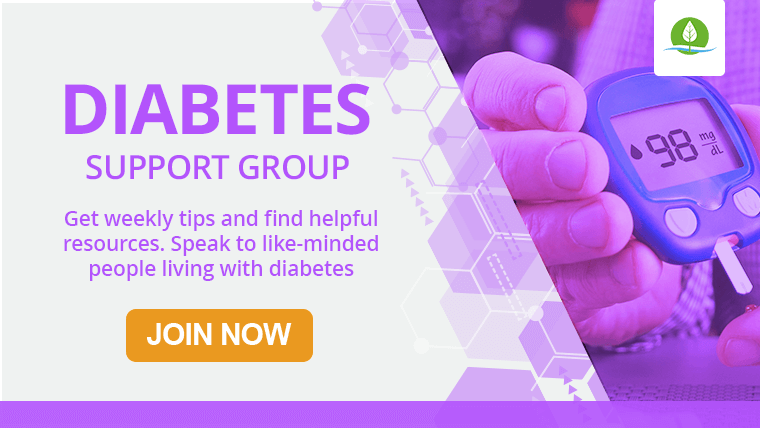Diabetes mellitus, more commonly known as diabetes, is known to cause numerous complications.
One of the potentially lesser-known side effects of diabetes is nausea.
Nausea can occur because of medications, untreated high blood sugar, among other reasons. Not everyone who has diabetes will develop nausea.
Still, it’s essential for people with diabetes to know how to take care of their diabetes and minimize their likelihood of developing this unpleasant condition.
What is Nausea?
Nausea is an uneasy, queasy feeling in your stomach that sometimes precedes vomiting. People become nauseous for countless reasons, including motion sickness, food poisoning, pregnancy, eating, or drinking too much, and head injuries.
When people are nauseous, they usually have a loss of appetite. They may also have difficulty completing their normal day-to-day tasks.
While unpleasant, nausea serves as a very important protective biological function in humans. Nausea can help deter us from eating foods that are dangerous for us, such as toxins and chemicals.
Chronic nausea is cause for concern more than intermittent, situational-based nausea, such as eating a food that you don’t tolerate well.
Chronic nausea can be a sign that something is off with your body. Therefore, a case of chronic, unexplained nausea would warrant further investigation.
Get Your FREE Diabetes Diet Plan
- 15 foods to naturally lower blood sugar levels
- 3 day sample meal plan
- Designed exclusively by our nutritionist
Causes of Diabetes Nausea
Nausea and vomiting can arise from different causes, including:
- Experiencing low and high blood sugars
- Diabetic ketoacidosis
- Pancreatitis
- Gastroparesis
- Low blood pressure
- Alcohol use
- Even some diabetes medications can have these same effects
We will discuss some of these causes of diabetes nausea in more detail below.
Low Blood Sugar Levels (Hypoglycemia)
A normal blood sugar range is between 70 and 140 mg/dL. It can become problematic if your blood glucose level consistently falls above or below this range.
A low blood sugar level is defined as being less than 70 mg/dL. Having low blood sugar (blood glucose) is called hypoglycemia. You might not feel symptoms of a low blood sugar level until it falls below that threshold, or you might feel symptoms at a slightly higher blood sugar level.
Low blood sugar levels can arise from too much insulin or other diabetes medication, not eating enough, and too much exercise, among other factors.
High Blood Sugar Levels (Hyperglycemia)
Blood sugar levels that are too high (hyperglycemia) can also cause nausea.
In the case of hypoglycemia, it’s important to consume food or drink with sugar in it to raise blood sugar levels, which should help to relieve nausea. In the case of hyperglycemia, it’s crucial to check blood glucose often to ensure they don’t raise to dangerously high levels and to be in contact with a healthcare provider.
One of the serious complications of uncontrolled high blood sugar includes diabetic ketoacidosis (DKA), which commonly occurs in people with type 1 diabetes, and diabetic hyperglycemic hyperosmolar syndrome (HHS) in people with type 2 diabetes, of which nausea is a symptom of both.
Other signs and symptoms signs of diabetic ketoacidosis include abdominal or stomach pain, fatigue, frequent urination, excessive thirstiness, fruity odor to the breath, shortness of breath, and sometimes unconsciousness.
Dehydration from nausea and vomiting can further worsen electrolyte imbalances, which is why it’s essential to seek prompt medical attention for these conditions.
Diabetes Medications
While diabetes medications are very important for helping to manage diabetes, all medications have side effects, some of which include nausea.
Metformin is a popular diabetes medication known to cause several gastrointestinal side effects, including nausea.
For this reason, many healthcare providers begin with a small dose and encourage the patient to increase the dose as tolerated over several weeks gradually.
In addition to steadily increasing the dose, taking metformin with a meal may also help reduce the unpleasant side effects.
- Byetta (generic name exenatide) is an injectable blood-sugar-lowering medication from the GLP-1 receptor agonist family. Byetta is known to cause side effects such as nausea or vomiting, upset stomach, and diarrhea, among others. Victoza (generic name liraglutide) is another GLP-1 receptor agonist like Byetta and is known to cause nausea and other GI symptoms.
- Symlin (generic name pramlintide) can cause nausea, similar to the other GLP-1 receptor agonists already mentioned. Side effects can be exaggerated if too high a dose is taken, so following exact prescribing information and following up with the prescribing healthcare provider is very important.
- Sulfonylureas, another class of diabetes medications that can cause nausea, though it is infrequent.
- DPP-4 inhibitor drugs such as Januvia and Onglyza may cause nausea, and may also increase the risk of pancreatitis, so it usually isn’t recommended for those with a history of pancreatitis.
- Insulin usually doesn’t cause symptoms because it’s something the body makes naturally. Still, in the event of injecting too much insulin and/or not eating enough after taking it, low blood sugar can result, which does cause nausea.
Gastroparesis
One of the potential long-term consequences of chronic high blood sugar is gastroparesis. High blood sugar damages the nerves of the stomach, which affects how well it empties food out of the stomach to the rest of the digestive system.
Symptoms of gastroparesis include a feeling of fullness, heartburn, nausea, and vomiting. Eating large, high-fiber, and/or high-fat meals can exacerbate symptoms.
This is as these foods take longer to digest, not just those with gastroparesis. The longer food sits in the stomach, the more likely the patient is to suffer from symptoms.
Pancreatitis
Pancreatitis is painful inflammation of the pancreas, which is the organ responsible for making insulin.
People with uncontrolled diabetes are 2-3 times more likely to develop pancreatitis than people without diabetes. Pancreatitis is a swelling and inflammation of the pancreas, and may cause nausea. Vomiting, abdominal pain, and high triglyceride levels often accompany the nausea.
On the other hand, chronic pancreatitis can actually be a risk factor for developing diabetes.
Chronic inflammation of the pancreas can interfere with its ability to produce insulin. Insulin is the hormone responsible for helping regulate and lower blood sugar. When insulin production decreases, blood sugars increase as a result.
Having diabetes can also increase the risk of pancreatic cancer, especially if your diagnosis was after age 50 and you have had diabetes for more than 5 years. Pancreatic cancer can also cause nausea in the later stages if it isn’t caught.
Note: if your diabetes suddenly becomes very difficult to control, it could be a possible early sign of pancreatic cancer. This is why routine follow-up with your healthcare provider is crucial for the prevention of diabetes complications.
Alcohol use
Taking alcohol with blood-sugar-lowering medications may increase the risk of hypoglycemia which can cause nausea. This is especially likely if you consume alcohol on an empty stomach.
When you consume excessive alcohol, this stimulates the pancreas to make more insulin. This is why people taking diabetes medications must be cautious with their alcohol intake.
Taking metformin while drinking a large amount of alcohol can not only increase the risk of hypoglycemia but also increases the risk of lactic acidosis.

Frequently asked questions about diabetes and nausea
Can diabetes cause morning nausea?
Yes. People with diabetes may experience nausea in the morning. Why? Diabetic patients may experience hypoglycemia, or low blood sugar levels, in the morning due to too much long-acting insulin. And this can, therefore, lead to nausea.
Can diabetes cause nausea after eating?
Some people with diabetes can experience nausea after eating, especially if you eat large meals or lie down after eating. Luckily, there are ways you can prevent and manage nausea which we discuss below.
Can high blood sugar cause nausea?
Yes, people with high blood sugar, or hyperglycemia, can experience nausea.
How to Prevent and Manage Nausea
Medication
Take diabetes medications as prescribed to avoid high blood sugar, which can result in more serious complications such as DKA and HHS. By checking blood sugar regularly and performing the hemoglobin A1c test every 3-6 months, your healthcare provider can make adjustments to your care plan. This will help to ensure that your blood sugars don’t get in the dangerously high zone.
Speak with your doctor if you suspect a diabetes medication is responsible for your nausea. There are many different medication options available, and everyone responds to medications differently.
Eat consistent meals
Eat consistent meals and snacks during the day to help balance your blood sugars. If you skip meals, especially while taking diabetes medications, the likelihood of developing low blood sugar increases. This can cause nausea.
Eat carbohydrates
Eating carbohydrates consistently throughout the day can help balance blood sugars. A good way to structure meals is by following the plate method, which is often recommended for people with diabetes.
The BRAT diet
To help treat nausea, healthcare providers recommend a BRAT diet. This stands for bananas, rice, applesauce, and toast, as well as other bland, non-spicy foods. Well-tolerated bland foods include crackers, plain white pasta, and broth.
Juice and Sports Drinks
If nausea is so severe that regular meals can’t be eaten, sipping on clear juices or regular sports drinks can help prevent low blood sugar and dehydration. Doctors recommend you consume 50 grams of carbohydrates every 4 hours if a person is unable to eat solid foods.
Ginger
Some people find that taking ginger can help alleviate nausea naturally. For pregnant women with diabetes, vitamin B6 may also help relieve nausea.
If you suffer from gastroparesis
If you suffer from gastroparesis, try to focus on eating small meals and avoid high-fat and fiber foods. Cooking and chewing food well helps to reduce symptoms, as well as staying upright after eating. A healthy diet and exercise can also promote good digestion, which is recommended for all people with diabetes.
Takeaway
Managing diabetes by attending all regular check-ups with your healthcare provider can help reduce the likelihood of developing conditions such as DKA, HHS, gastroparesis, and pancreatitis, which can all cause nausea.

Conclusion
While nausea is a common symptom of many health conditions, it can relate to diabetes.
Diabetes medications, too-high or too-low blood sugar, consuming alcohol while on diabetes medications, and inevitable long-term consequences of uncontrolled diabetes can all result in nausea.
By being an active participant in their own healthcare, people with diabetes can help reduce the risk of long-term complications.
For those already suffering from nausea or vomiting, there are several home remedies and tips to help alleviate the symptoms. These include such as eating small, frequent meals, avoiding high-fat and high-fiber foods and eating bland foods. Ginger and vitamin B6 may also help alleviate nausea, especially in pregnancy.
Explore More

Find out 15 Natural Ways To Get Rid Of Nausea.






